
Dhol can refer to any one of a number of similar types of double-headed drum widely used, with regional variations, throughout the Indian subcontinent. Its range of distribution in India, Bangladesh and Pakistan primarily includes northern areas such as the Punjab, Haryana, Delhi, Kashmir, Sindh, Assam Valley, Uttarakhand, West Bengal, Odisha, Gujarat, Maharashtra, Konkan, Goa, Karnataka, Rajasthan, Bihar, Jharkhand and Uttar Pradesh. The range stretches westward as far as eastern Afghanistan. A related instrument is the dholak or dholki. its origin in the Panjab region of India and Pakistan

The Kannada people or Kannadigaru [IAST: Kannadadavaru or Kannadigas ] are a Dravidian ethno-linguistic group who trace their ancestry to the South Indian state of Karnataka in India and its surrounding regions. The Kannada language belongs to the Dravidian family of languages. Kannada stands among 30 of the most widely spoken languages of the world as of 2001.

Ellora is a UNESCO World Heritage Site located in the Aurangabad district of Maharashtra, India. It is one of the largest rock-cut Hindu temple cave complexes in the world, with artwork dating from the period 600–1000 CE. Cave 16 features the largest single monolithic rock excavation in the world, the Kailash temple, a chariot-shaped monument dedicated to the god Shiva. The Kailash temple excavation also features sculptures depicting various Hindu deities as well as relief panels summarizing the two major Hindu epics.

Kali was the sixth fragment of the primordial manifestation of Kroni (evil) according to Akilathirattu, the source of Ayyavazhi mythology and the holy book of Ayyavazhi religion. Unlike other previous manifestations, Kali spread in this yugam as maya (illusion). Details of Kali were restated in Ayyavazhi Religion and he is the same Kali mentioned in Kalki Purana.
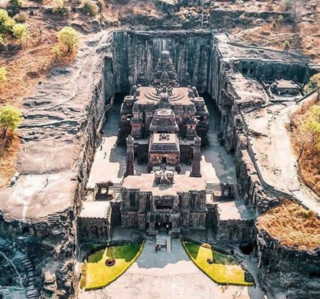
The Kailasha or Kailashanatha temple is the largest of the rock-cut Hindu temples at the Ellora Caves, Aurangabad District, Maharashtra, India. A megalith carved from a rock cliff face, it is considered one of the most remarkable cave temples in the world because of its size, architecture and sculptural treatment, and "the climax of the rock-cut phase of Indian architecture". The top of the superstructure over the sanctuary is 32.6 metres (107 ft) above the level of the court below, although the rock face slopes downwards from the rear of the temple to the front. Archaeologists believe it is made from a single rock.
Dollu Kunitha, is a major popular drum dance of Karnataka.
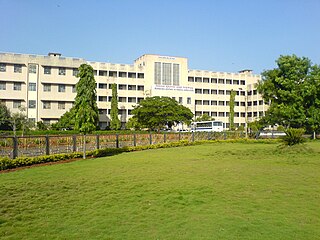
Dharwad is an administrative district of the state of Karnataka in southern India. The administrative headquarters of the district is the city of Dharwad, also known as Dharwar. Dharwad is located 425 km northwest of Bangalore and 421 km southeast of Pune, on the main highway between Chennai and Pune, the National Highway 4 (NH4).

Karnataka has a variety of traditional arts, including folk dance and puppetry.
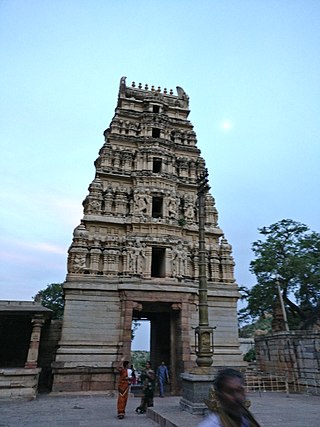
Sri Yaganti Uma Maheswara Temple or Yaganti is a temple of Shiva in Nandyal district in the India state of Andhra Pradesh. It was built according to Vaishnavaite traditions.

Yana is a tourist destination located in forests of Malenadu region of Uttara Kannada district of Karnataka state in India. Yana is one of the wettest villages in the world. It is the cleanest village in Karnataka, and the second cleanest village in India. The two unique rock outcrops near the village are a tourist attraction and easily approachable by a small trek through 0.5 kilometres (0.31 mi) of thick forests from the nearest road head.

Shri Guru Kottureshwara Shrine at Kotturu is an ancient shrine located at Kotturu taluk, Vijayanagara District, North Karnataka, India, 583134. This temple is 19 km from Kudligi, 28 km from Hagaribommanahalli, 70 km from Davanagere and 253 km from Bangalore.
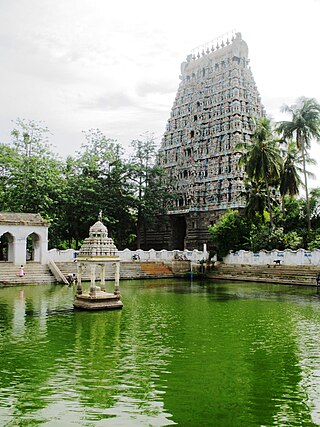
Mayuranathaswamy Temple, Mayiladuthurai or Mayuranathar Temple is a Hindu temple in the town of Mayiladuthurai in Tamil Nadu, India. The temple is dedicated to Lord Mayuranathaswamy, a form of Shiva, and has given its name to the town itself. The main icon is a lingam and the presiding deity is called Mayuranathar because the Hindu goddess Parvathi worshipped Shiva here in the form of a mayura.

Velanai Island, also known as Leiden in Dutch, is a small island off the coast of Jaffna Peninsula in the North of Sri Lanka. There are number of villages within the island such as Allaipiddy, Mankumpan, Velanai, Saravanai, Puliyankoodal, Suruvil, Naranthanai and Karampon.

Karibasavaiah was an Indian actor who appeared in Kannada cinema and a theatre personality. He has acted in over 120 films. He died on 3 February 2012 after a road traffic accident in Bangalore. He made his debut in the movie Undo Hodha, Kondu Hodha. Some of his memorable films are Kotreshi Kanasu, Janumada Jodi, Galate Aliyandru, Mungarina Minchu, Yaarige Salute Sambala, Police Story 2 and Ullasa Utsaha.

Nainativu Nagapooshani Amman Temple [Tamil: நயினாதீவு நாகபூசணி அம்மன் கோயில், romanized: Nayiṉātīvu Nākapūcaṇi Am'maṉ Kōyil - Meaning: Nainativu ; Nagapooshani ; Amman (Goddess)] is an ancient and historic Hindu temple located amidst the Palk Strait on the island of Nainativu, Sri Lanka. It is dedicated to Parvati who is known as Nagapooshani or Bhuvaneswari and her consort, Shiva who is named here as Nayinaar. The temple's fame is accredited to Adi Shankaracharya, a 9th-century Hindu philosopher, for identifying it as one of the prominent 64 Shakti Peethams in Shakti Peetha Stotram and its mention in the Brahmanda Purana. The temple complex houses four gopurams ranging from 20–25 feet in height, to the tallest being the eastern Raja Raja Gopuram soaring at 108 feet high. The temple is a significant symbol for the Tamil people, and has been mentioned since antiquity in Tamil literature, such as Manimekalai and Kundalakesi. The present structure was built during 1720 to 1790 after the ancient structure was destroyed by the Portuguese in 1620. The temple attracts around 1000 visitors a day, and approximately 5000 visitors during festivals. The annual 16-day Mahostavam (Thiruvizha) festival celebrated during the Tamil month of Aani (June/July) - attracts over 100,000 pilgrims. There is an estimated 10,000 sculptures in this newly renovated temple.
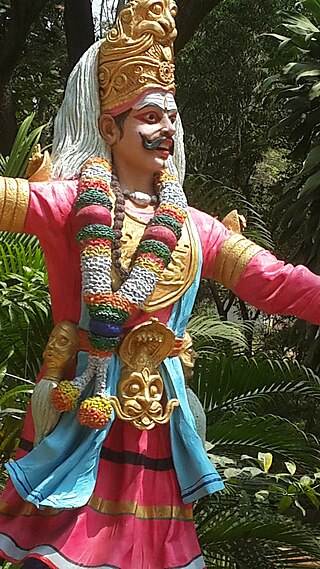
Jaanapada Loka, is a folk museum that has an exclusive display of the village folk arts of Karnataka. It is under the aegis of the Karnataka Janapada Parishat. Loka Mahal, a wing in the museum has a display of 5,000 folk artifacts. It is situated in Ramanagara, Ramanagara district in the Indian state of Karnataka, on the Bangalore-Mysore highway, 53 kilometres (33 mi) to the south of Bangalore.

Tourism in Marathwada refers to tourism in the Marathwada region of Maharashtra state in India. Aurangabad is a regional headquarters in Marathwada, and the tourism capital of Maharashtra state. Out of the four UNESCO World Heritage Sites in Maharashtra, two are in the Marathwada region. There are also 110 monuments in Marathwada which are protected by Government of Maharashtra and recognized by Archaeological Survey of India.

Hanumanthanagar, is a locality in the Banashankari suburb of South Bangalore. It gets its name from the Ramanjaneya Temple near the Kengal Hanumanthaiah Kalaa Soudha, which was built during the time of Kengal Hanumanthaiah, the then chief minister of Karnataka.
Devi Adi Parashakti is a mythological television series based on the Hindu texts of the Shiva Purana, the Devi-Bhagavata Purana, the Markandeya Purana, and pan-Indian folktales of the Goddess. The series was created by Siddharth Kumar Tewary, directed by Loknath Pandey and Manish Singh, and produced by Swastik Productions. Rati Pandey plays the role of Devi Adi Parashakti and her incarnations Goddess Sati, and Goddess Parvati. Tarun Khanna played the role of Devi's husband, Lord Shiva with Kanan Malhotra as Lord Vishnu, Devi's brother. The show also features Sonia Singh as Goddess Diti, the main antagonist.
Kantara is the soundtrack album to the 2022 film of the same name, written and directed by Rishab Shetty, and stars himself in the lead role. Produced by Hombale Films, the film features music composed by B. Ajaneesh Loknath, who described it as a "culture-based folklore film in musical context" and wanted the music to be "rooted in the traditions of the 1990s". To attempt, what the crew had envisioned, both the film score and original songs were composed using folk instruments and folk musicians were roped in for the songs.

















